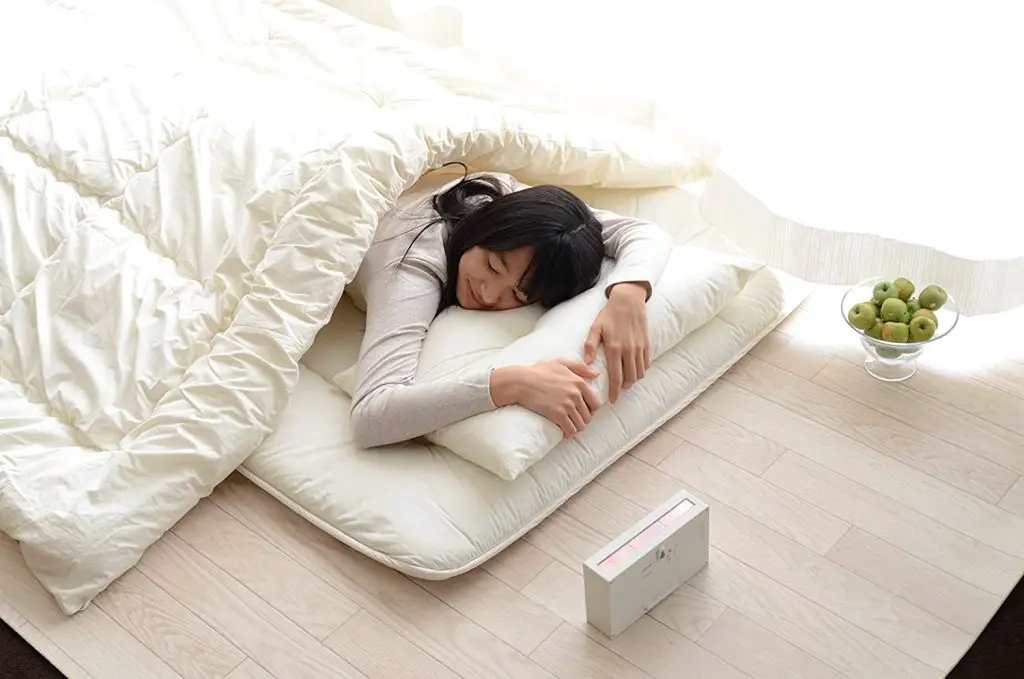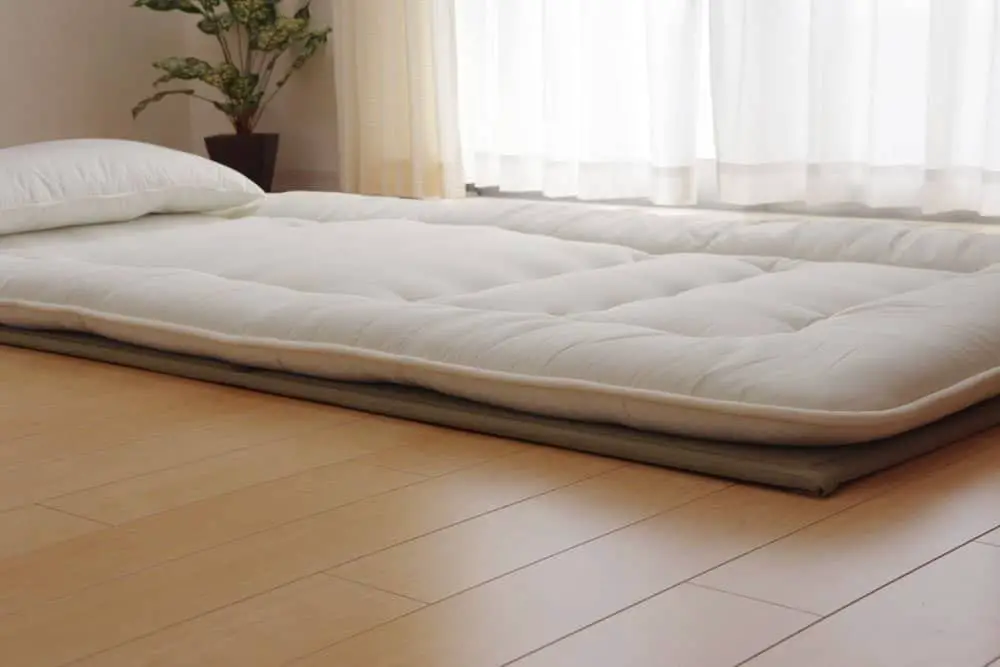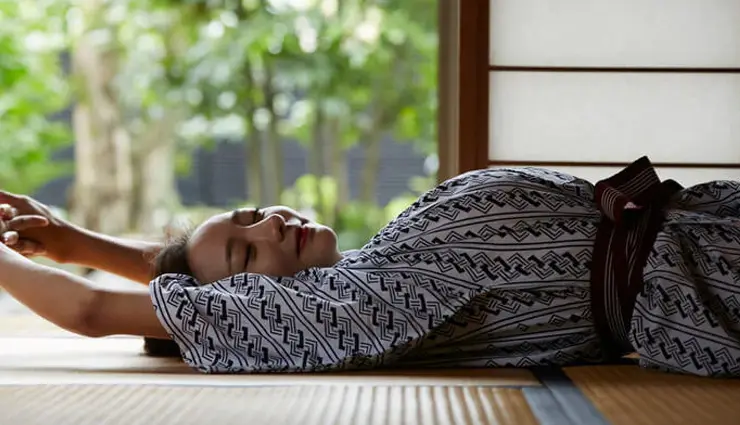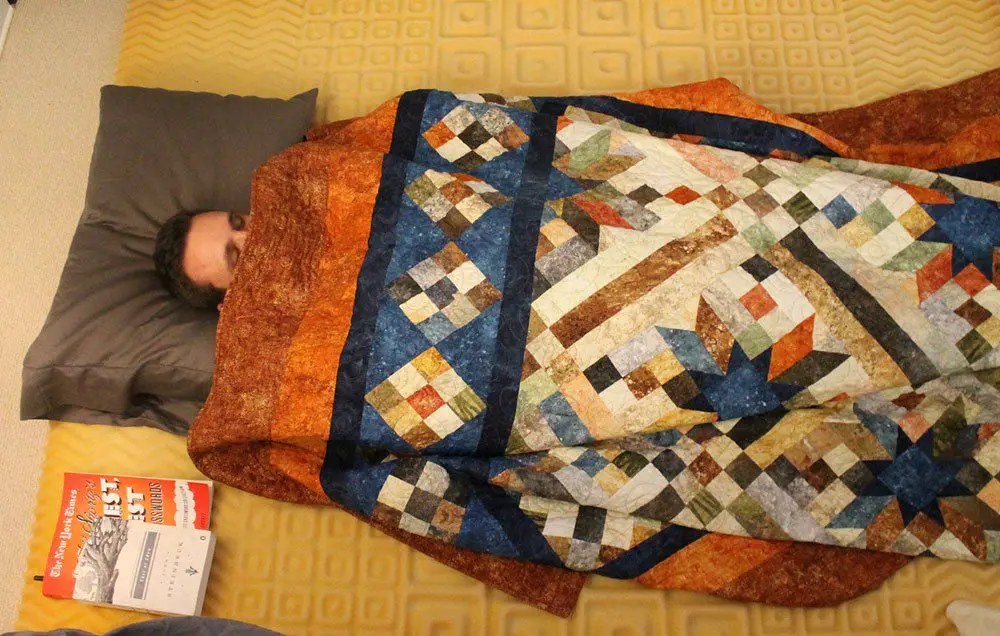Why Do Japanese People Sleep On The Floor? – Here’s The Explanation
There’s a strong possibility you won’t find a bed when you enter a Japanese bedroom. For thousands of years, the Japanese have kept a unique, simple sleeping routine that is quite distinct from much of other regions of the world.
For centuries, sleeping on the floor has been considered an important custom for Japanese people. Although this ancient sleeping method is most common in Japan, foreigners are increasingly turning to it in pursuit of a better night’s rest.
So, “why do Japanese people sleep on the floor“, “what are the benefits of sleeping on the floor”, “how do they sleep”, … and a series of other questions about Japanese sleeping culture has been explained in detail in this article.
Japanese Floor Sleeping Culture – When Did It Start?
Since the 10th century, hemp mats have been used in Japan for sleeping, according to historical records. Wealthy individuals started combining their mats with patterned cushions throughout the Nara period. In order to maintain warmth while sleeping on the hemp mat, comforters were first introduced in Medieval times.
Although a lot has changed and developed since then, the custom of sleeping on the floor remains unchanged.
A tatami mat, which is made of woven rushes and padded with rice straw, serves as the base of a Japanese sleep. The traditional Japanese bedding includes a unique buckwheat hull pillow, a Kakebuton (Japanese comforter) plus a Shikifuton (Japanese mattress).
Why Do Japanese People Sleep On The Floor?
Because it is a centuries-old tradition for generations, Japanese people have a habit of sleeping on the floor with tatami mats and Japanese-style cushions. In small households, sleeping on the floor helps to save room, which is very crucial, particularly in Japan where accommodation is fairly restricted. A lot of individuals think sleeping on the floor gives them greater flexibility to move around the house.
The hard layer on a conventional Japanese mattress, or “Shikifuton” is said by many Japanese people to be good for the back, enhance circulation, and lessen pressure on joints. Additionally, many people consider sleeping on the floor as an effort to maintain traditional Japanese culture.

Because it is a centuries-old tradition for generations, Japanese people have a habit of sleeping on the floor with tatami mats and Japanese-style cushions. (Source: Internet)
You can purchase both winter and summer futons, as opposed to the west where people are restricted to a single bed for the entire year. To escape the heat in the summer, use one that is lighter and more breathable. In contrast, a thicker futon in the winter will assist with keeping you warmer during cold days.
Another reason why Japanese people sleep on the floor is the frequency of earthquakes in Japan. They will save time and be safer during disasters if they use a thin, light mat that is easy to fold and store instead of bulky Western beds.
How Japanese People Sleep On The Floor?
The Japanese have a distinct method for sleeping on the floor.
Typically, Japanese people sleep on a tatami mat, which is a surface created from rice straw. Some homes have daytime-folding flexible tatami mats, while others possess permanent tatami mats placed in the sleeping arrangements.
They utilize an traditional Japanese mattress called a “Shikifuton,” which is light, flexible and can be quickly folded up and stored away when not in use. This futon is frequently set on top of a tatami mat. The Japanese mattress includes a layer of cotton fill and is considerably thinner than the Western mattress.

They utilize an traditional Japanese mattress called a “Shikifuton,” which is light, flexible and can be quickly folded up and stored away when not in use. (Source: Internet)
The typical bedding is the next step. While Western-style pillows are seen in many Japanese bedrooms, some people prefer Japanese-style pillows filled with buckwheat hulls, which offer them a bit spikier texture.
For further warmth in the winter, it’s customary to add a Japanese duvet called “Kakebuton”.
You can also like:
- How Much Do Sumo Wrestlers Make?
- How to Make Japanese Rice in Rice Cooker?
- Best Hikes In Japan: Discover The Most Amazing Hiking Trails
Surprising Benefits Of Sleeping On The Floor
1. Cooler in summer and warmer in winter
Japan’s summers may become extremely hot, especially in urban areas. Tatami mats are breathable and thin, and the way they are placed on the floor encourages the flow of cool air. You can also sleep on a tatami without a futon.
On the other hand, in winter, you can add a futon and kakebuton duvet to keep warm. It is believed that the Japanese sleeping method will regulate the temperature of your body better.

Japan’s summers may become extremely hot, especially in urban areas. (Source: Internet)
2. Good for your health
Sleeping on a tatami mat is recommended by many medical professionals because of its amazing benefits for the spine and nervous system. Several studies show that sleeping on a mat can reduce spine problems.

Sleeping on a tatami mat is recommended by many medical professionals because of its amazing benefits for the spine and nervous system. (Source: Internet)
The body may move around throughout the sleep cycle and the tatami can help the spine to shift into a more neutral posture. Additionally, The hard surface of the floor can help you avoid tossing and turning, which can result in a deeper, more tranquil sleep.
3. Save space
The Japanese sleeping routine will help you free up a lot of space. Japan is known for having restricted space, and their sleeping habits reflect this. The mattress and mat can both be easily folded and stored during the day, making room for other uses.

The Japanese sleeping routine will help you free up a lot of space. (Source: Internet)
What About The Downsides?
There are also a few downsides to sleeping on the floor. Sleeping on the floor can frequently be very unpleasant because the surface is so hard and cold for some people. This indicates that this sleeping method could not always provide sufficient warmth or comfort.
Sleeping on the floor may not be as comfortable and quick as sleeping on the bed because it will take you much time every morning and every night to spread and store the mattress.
Additionally, the tatami mats may have bugs so in order to enjoy a good night’s rest while sleeping on tatami mats, it is crucial to ensure the surface is pleasant, clean, and cushioned with the right bedding.
Interesting Facts About Sleeping Culture In Japan
In Japan, it is encouraged and highly regarded to sleep in public. As weird as it might seem, in this country taking a nap is seen as a sign of strength. It even has its own name “inemuri”.
Since most of us already understand how fierce the Japanese dedication to work is, it should come as no surprise that many people work until they are virtually unable to do so.
Therefore, sleeping during a conference, at the office, or on the train is nearly always proof that you put the interests of the company ahead of your own and are fully committed to your work.
Another interesting fact is that you can find tatami mats anywhere in Japan. Tatami culture weaves from Japanese bedrooms to popular restaurants, from tea houses to coffeeshops,…It is normal to sit on the ground in a five-star dining establishment in Japan because this custom is so ingrained in the lifestyle of Japanese people.
Take A Look At Some Japanese-style Bedrooms
In regards to function, a Japanese bedroom is comparable to a Western one. The furnishings, layouts, and general atmosphere are where the differences can be seen. A design principle is frequently used in Japanese bedrooms: minimalism. The Japanese people love simple and effective architecture that incorporates much greenery and instills a Zen-like spirit.
Everything is built on minimalist concepts, with a focus on practicality and simplicity, rather than decorations and arrangements. The furniture of the conventional Japanese style is low to the ground, which is one of its most fundamental and distinctive features.
Natural light and simple colors are also other features in the Japanese-style bedroom.
FAQs
1. Why don’t Japanese people sleep on beds?
In fact, sleeping on the floor or in bed depends on each person’s preference. Some Japanese families still sleep in beds. However, sleeping on the floor is more popular than most in Japan. The Japanese people believe that sleeping on the floor is good for their health, keeps them safer in emergencies, and helps maintain their culture.
2. Why is Japan sleep deprived?
Although there are plenty of contributing reasons, social customs, and an intense work ethic represent two of the main causes of sleep deprivation in Japan. Maybe as more people realize how crucial sleep is, they’ll start to make adjustments that will enable them to get the necessary sleep.
3. Is sleeping on tatami good for your health?
Tatami mats might be an excellent solution to enhance the posture of your spine if you sleep on your back. In comparison to a standard mattress, the Japanese mattress is harder. This surface reduces obstruction in the human body and encourages improved circulation.
4. Do tatami mats get bugs?
Made from rushes and straws, the tatami mats easily get moist. If the surface gets covered for an extended length of time, mold will grow on it and it may even draw bugs. As a result, they need to be cleaned and dried in the sun regularly.
5. Is a Japanese futon good for you?
A firm mattress helps maintain spinal alignment and lowers your risk of experiencing back pain each morning. Additionally, using futons for sleep has been beneficial for pregnant women. To get the comfort level you want, add a soft mattress layer.
6. Is tatami hard to clean?
No. Using a vacuum cleaner to clean tatami mats is the simplest method. Vacuuming must be done following the grain to avoid damaging the tatami cover. You can use a dry soft cloth for wiping the surface after vacuuming. Tatami shouldn’t be wiped with a damp cloth.
7. Can you sleep anywhere in Japan?
In fact, the Japanese word “inemuri”, which roughly translates to “nodding off” can also refer to “sleeping whilst present”. In Japan, taking a nap during the day is socially acceptable. You can sleep anywhere in Japan including coffee shops, trains, department stores,…
Conclusion
“Why do Japanese people sleep on the floor?” is a common question of foreign visitors each time they come to Japan. However, not only Japan but some other Asian countries such as Korea, Vietnam, … also have the habit of sleeping on the floor. We can understand that this is their long-standing cultural tradition.
For the Japanese people, more than just a custom, sleeping on the floor offers them many health and lifestyle benefits. If you visit Japan, try a Japanese-style hotel to experience this unique sleeping method. You will discover it is more interesting than a bed.








